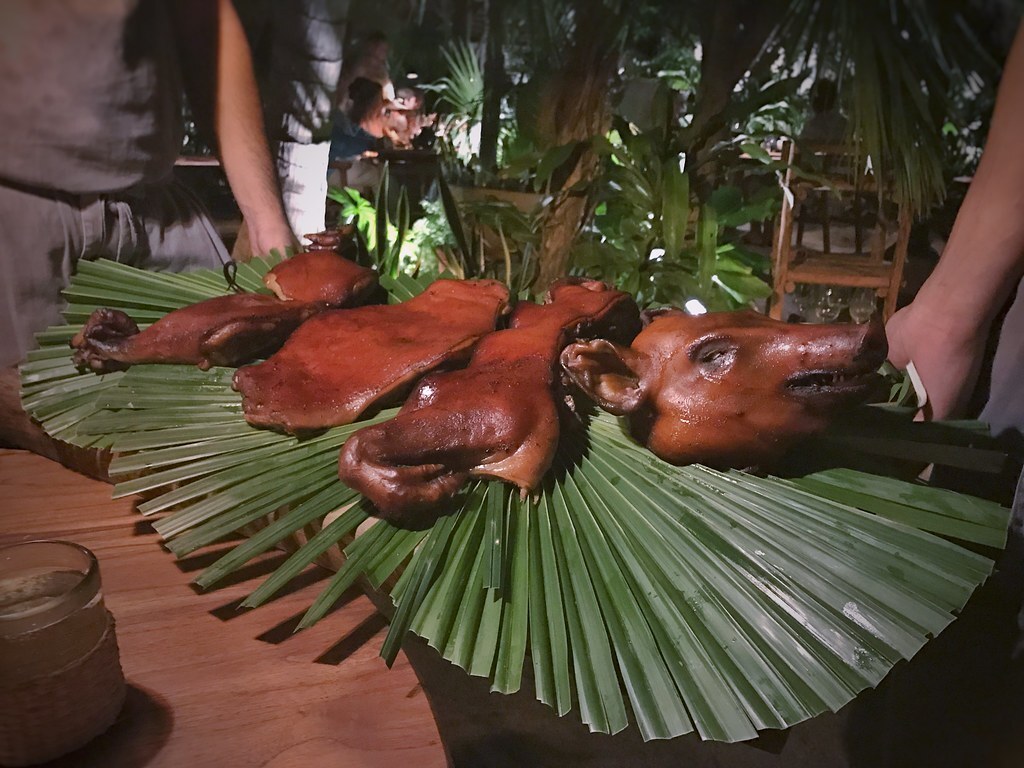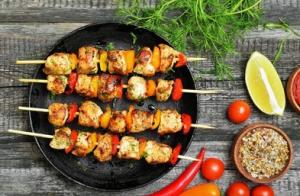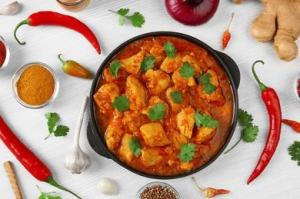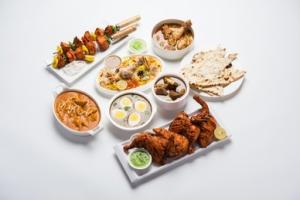Pigs are serious business in the eastern Indian Ocean and they are particularly reared for consumption among the Nicobari tribes. In this tropical paradise of sun and sand, the pigs are revered for their tasty meat. The number of pigs reared by a family often determines placement in the Nicobari social ladder. A sturdy pig pen is built by the household for the pigs to settle in comfortably and it is fed a special diet of coconuts and kitchen scraps. The pigs are well-fed and reared in an attentive environment. Their festivals and ceremonies are mostly centered on the pig and they even have a pig festival called the Cana-haun festival. During the Cana-haun festival, the Nicobari families select a swine from their livestock to slaughter and distribute among themselves. Pork is consumed particularly during marriage festivals and village fairs.
The Nicobari tribes have a special memorial festival called Fatya in the Nicobari language. In this festival, pigs are exchanged between families and islands. The Nicobari language has particular words to describe each anatomical feature of the pig. In the local language, the pig is called the Ha-un while the meat or flesh is referred to as the alaba. There is a special event attached to most Nicobari festivities, the pig fight. In the pig fight, the tribe members and pigs square off in a fight. In this lopsided battle, the pig is usually defeated and has to pay the heavy price by having a sharp-ended stick struck through its heart.
The slaughtered pig is prepared for roasting by stuffing its mouth with plantains and covering the tail with tender coconut. The roasting platform is made from wooden logs and the pig is placed on it. The tribes use the leaves of the areca nut plant to make a fan which aids in the roasting. The whole pig is then roasted on dried coconut leaves. The dried coconut leaves are tied into bunches to form the roasting torches. This tying together of the dried leaves ensures slow-burning. A pointed stick is stuck into the pig to check if the meat is cooked properly. This cooking process ensures that the pig is entirely scalded and later it is cut into parts for consumption. The carving up of the roasted pig is left entirely to the experienced elderly men with the younger men offering assistance in separating the limbs.
Usually, the pig fat is smeared all over the meat after the roast for storage purposes. According to custom, the roasted pig is cut into a specific number of parts depending on the occasion or festivity. Special meaning is attached to the carving of the roasted pig, if any wrong cut is made the concerned person is soundly faulted and ridiculed in the gathering. This sense of proportion is extended to the distribution of raw pork as well. If the raw pork is cut without showing proper decorum and distributed in a likewise manner at a social event, the consequences are even direr. The wrongdoer is challenged to a duel with sticks and the traditional stick fight ensues. A higher form of retaliation for the indecorous handling of pork and dishonor is exercised by the insulted guests who generously donate a fatty pig to the hosts.






















